Deciding to launch a referral program is the first step of a successful referral marketing campaign.
It can offer many benefits to any type of business and there’s an essential element you need for it to be complete.
That part is figuring out how to track your referrals in order to stay on top of your campaign.
If you’re not sure how to do this, you’ve come to the right place.
We’ll explain everything you need to know in the following guide.
To be precise, we’re going to cover:
Plus, we’ve got a free template for you at the end which you can use to monitor your referrals.
We won’t keep you waiting any longer – let’s get started.
Referral tracking is the process of monitoring and keeping track of your referral campaign’s results.
This means collecting data about how many referred customers you received, when they signed up for your program, who referred them to you, plus any other information regarding your referral campaign.
After all, the advantages of referral marketing are clear; to give you an idea, 93% of people trust recommendations from people they know.
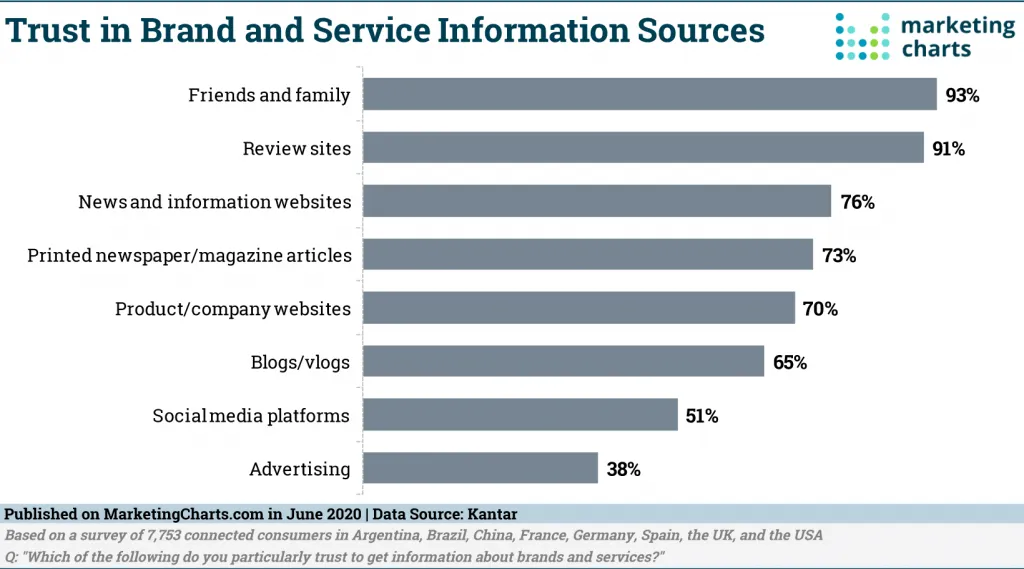
Image Source: Marketing Charts
It’s just a matter of execution and staying on top of your referral marketing program for optimized results.
Why is that so important?
Let’s have a deeper look.
In this part of our guide, we’re going to explain why referral tracking is so important for big and small businesses.
We hope that the reasons below will be an incentive for you to take advantage of referral marketing if you haven’t taken the step yet.
Let’s begin.
The first reason why you should track your referral process is so you can measure the right metrics.
Is there a better metric than your customers’ satisfaction?
Monitoring the effectiveness of your referral program offers valuable insights about whether your customers are satisfied with your product or service, based on how many new customers they refer to you.
In other words, if your users are spreading the word about you through the power of word-of-mouth, that’s a good indication that they love what your business offers.
On the other hand, if you don’t get any referral sales and are struggling to expand your customer base, there’s a chance that you don’t have enough loyal customers supporting you.
Being able to track their satisfaction will help you understand whether you need to make any changes to your product or amplify what you’re already doing.
Let’s move on to the next reason.
You’ve set up your referral campaign. Great job!
How will you know if it’s actually working ?
You can ascertain this by keeping track of your conversion rates so you can understand whether your referral marketing strategy is working or not.
If it’s not successful, you should probably make some iterations to your referral program such as offering better referral rewards, implementing a double-sided system, or even using a referral program software to help you optimize the process.
Although referral leads convert 30% better than other lead generation marketing channels, you should really keep track of your conversion rates.
They basically tell you the percentage of people who make a purchase after they clicked on a referral link they received.
You can calculate the conversion rate by using the following formula:

Let’s assume that a referral link you sent out received 100 clicks but only 10 of those people made a purchase or signed up.
This is a conversion rate of 10%:
(10/100) x 100 = 0.1 x 100 = 10%
Keep in mind, referral tracking can help with monitoring such metrics and tell you whether you should perform any iterations to your referral marketing campaign.
Author’s Note: It’s worth noting that conversions can vary from campaign to campaign. For some, the key metrics is sales, while for others it can be signups for example.
Let’s continue.
Another reason why you should track your referrals is for fraud detection.
If you don’t collect and monitor your referral data, there’s the risk of:
As well as any other action where a user could try to leverage your incentives by misusing the process.
For example, a self referral means that someone will try to refer themselves to your business by providing a different email address.
Duplicated referrals happen when a user refers the same person twice, account cycling is when someone signs-up for the reward and then cancels their account, while broadcasting means that advocates share their gifts online.
Look at the following referral program by cryptocurrency exchange platform, Binance.

Image Source: Binance
If the company wasn’t tracking it’s referral data, it would be easier for a user to take advantage of the 40% commission and refer themselves.
This would harm Binance financially due to the financial reward on offer and they’d get no new referrals and no new paying customers.
This is exactly why using a referral tracking system can help you avoid fraud.
Let’s move on.
Link any eCommerce business out there, you need to know how your sales are going.
You want to track whether they’re growing and where they’re coming from.
For instance, many SaaS companies keep track of their revenue and what percentage is driven from paid advertising, SEO, affiliate marketing, social media and of course, their referral programs.
Studies have shown that eCommerce companies see a 3x referral revenue growth in the first two years of implementing a referral program:
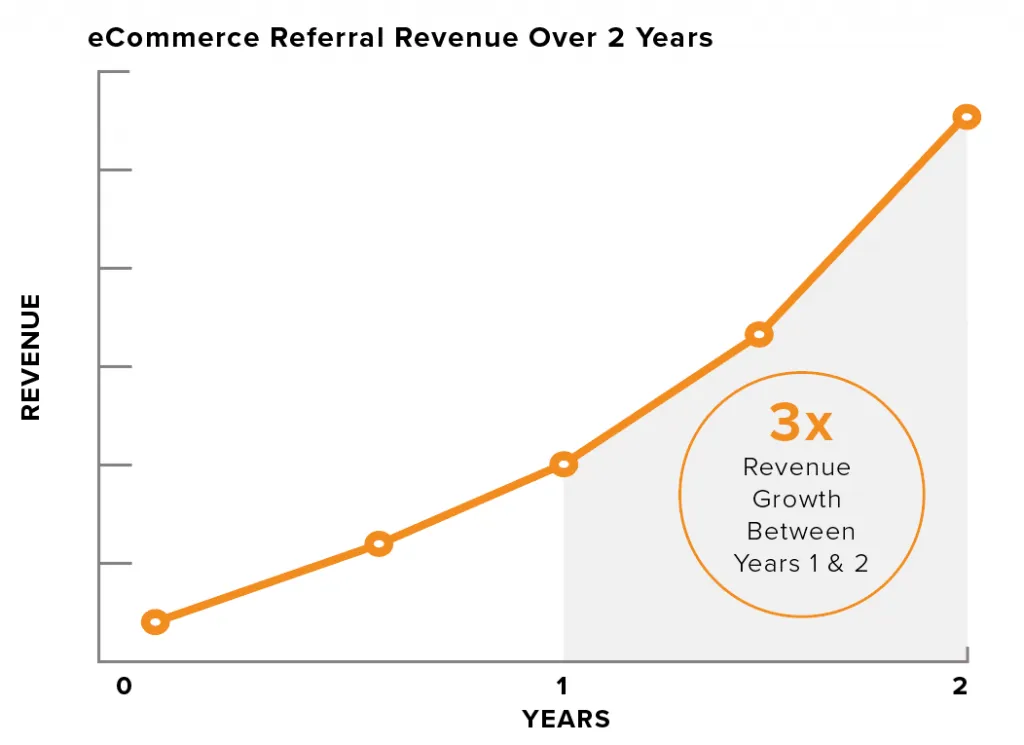
Image Source: Business 2 Community
If your referral sales have indeed increased significantly, then chances are that you should invest more in referral marketing.
If your sales are stagnant, it’s a sign that you should make adjustments to your customer referral program or the way you promote it.
Moving forward with the next reason.
Another aspect which makes referral tracking important is that it allows you to have a clear overview of your sharing rates.
This means that you’ll know the percentage of customers who share your brand with others, making it easier to decide whether you need to change your referral program.
Any good referral platform will provide you with the number of referral shares made to your website; we recommend always keeping an eye out for them.
Author’s Note: Keep in mind that the average referral rate is around 2.3% and anything over 2% is considered “good”.
You can calculate your referral rate by using a formula similar to the conversion rate; divide your referred purchases by the total purchases made on your website.

Overall, if your rate is too low, it’s a sign that you either don’t have enough satisfied customers or your referral program has weaknesses; such as your rewards not being attractive enough.
Let’s continue.
Last but not least, being able to track your referrals gives you great insight into your advocates.
You might have some customers who are super promoters; meaning people who do their best to refer your business to their network.
On the flip side, you might have referrers who are less active and don’t share your brand that much.
Whatever the case, you need to take action regarding both types of referrers.
Ideally, you want to identify your best referral sources, interact with them, and reward them for the great job they’re doing, but also work to engage with your less active brand advocates in order to motivate them to share your business more.
For example, you can offer them extra gift cards or coupon codes to congratulate or incentivize, according to their performance.
To sum up, by using good referral marketing software and other tactics which we’ll share later, you can monitor your referrals easily and make better decisions for optimizing your referral programs.
Now you know why referral tracking is so important, let’s see how you can actually do this in a few simple ways.
Now you’ve got the benefits of referral tracking down, we’re going to show you seven ways to efficiently track your referrals.
We’ll try to make things as simple as possible and provide examples that you can follow too, according to your business needs and resources.
Let’s get started.
We’ve all seen social media posts from influencers telling their followers to use a certain code, in order to receive a discount for something; that’s called a referral code.

Image Source: Twitter
People then enter that code before they checkout and the referrer will usually get a commission or some other type of reward.
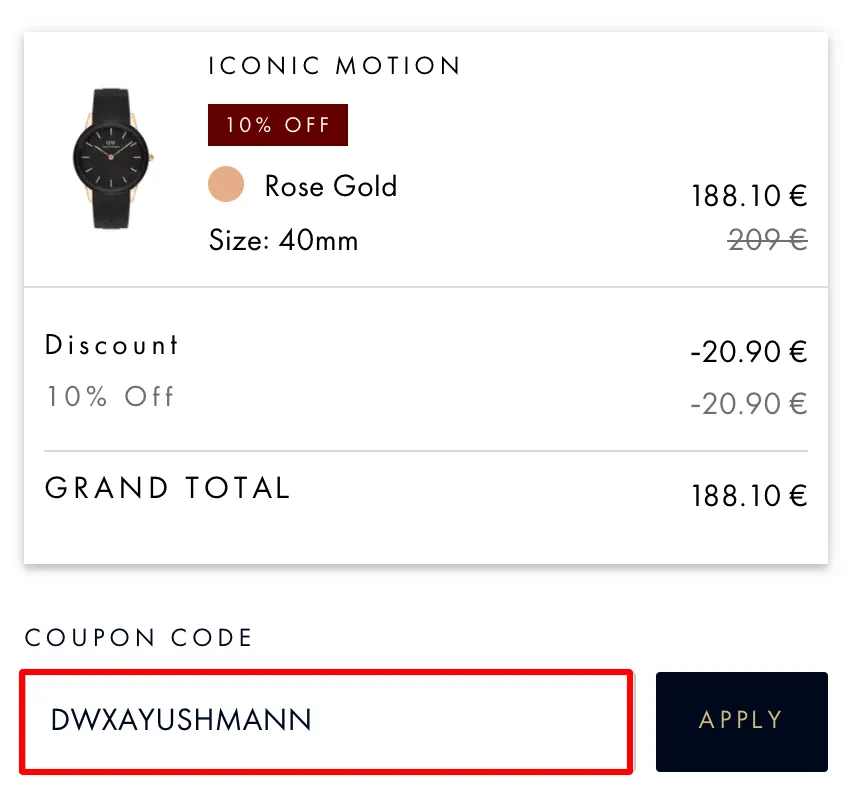
Image Source: Daniel Wellington
The code works as a unique identifier that attributes a specific referral to an advocate, which then allows you to track it and collect the necessary data.
For example, you can see how many times the referral code has been used, by who, and for which purchases.
Pretty cool, right?
This can give you a very good overview of how active each of your referrers is and how much the power of word-of-mouth marketing is working for you.
Pros: Easy to track; saves time and money
Cons: You don’t control the types of customers you receive
Let’s continue.
Have you ever visited a website and noticed that it uses cookies?
Everyone has to click on the consent – or reject – button for cookies, but not a lot of people really get what that means.
To put it simply, cookies are text files with data used to track, personalize, and save information about users’ sessions.
They also allow eCommerce sites to track visits from particular users, including the pages and products they view, in order to suggest similar products they may also be interested in.
Cookies also play a role in tracking referrals; when a referred person clicks on a unique link, a cookie is created containing their referral code before being directed to the website’s landing page.
It’s similar to how cookies in affiliate marketing work as well:
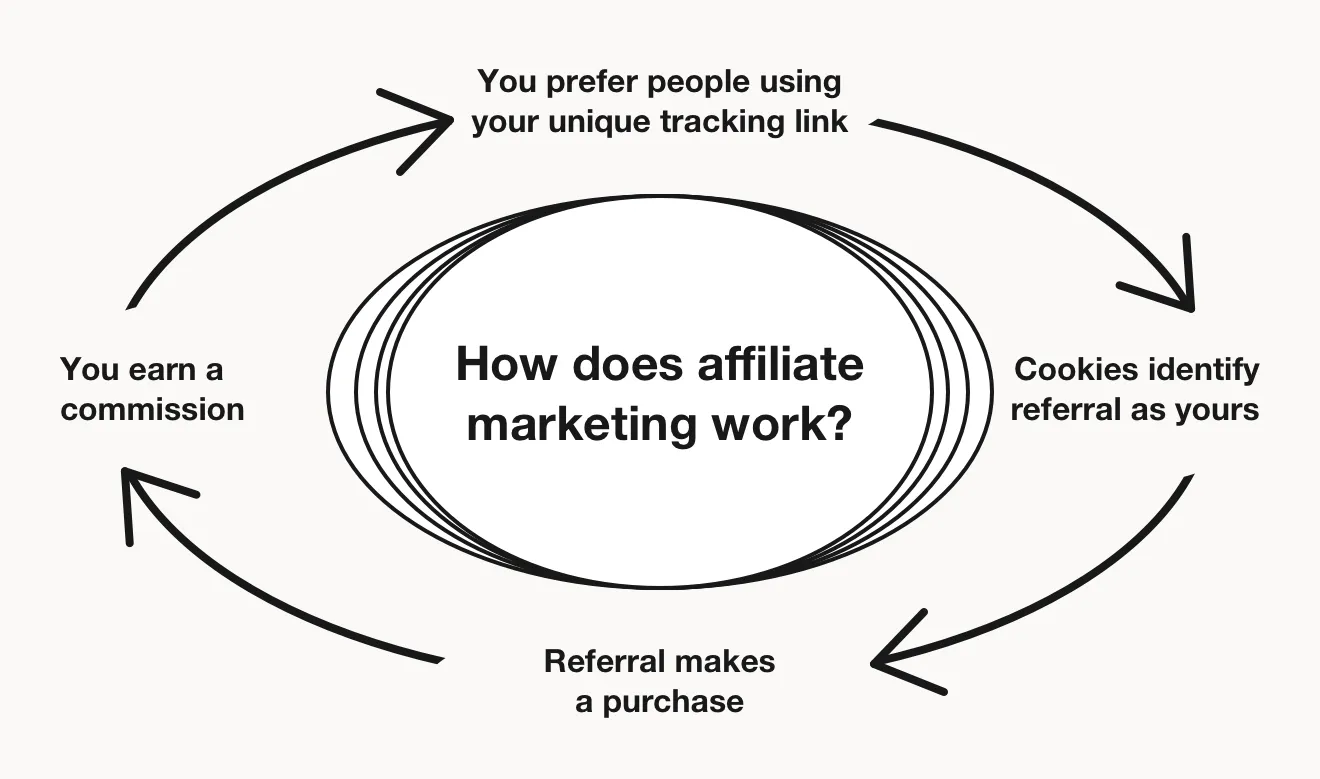
They identify which referrer is responsible for each referral.
That way, businesses know who visited their website and through which referral link.
Pros: Give valuable customer insights
Cons: Requires technical know-how to implement
Let’s move on.
The third tactic to monitor referrals is to use referral tracking software.
When it comes to referral marketing, there are so many pieces of information and valuable data you need to store and track, that sometimes it’s impossible to stay on top of.
This means you don’t get a clear overview of how effective your referral programs are.
This is exactly why referral marketing tools were created – in order to help you create great referral systems and then monitor their progress.
Some key referral metrics you need to be aware of are:
As well as many more that a referral tracking software can help you observe, so you can see which aspects of your campaign you should change.
Pros: Referral tracking is faster and easier through automations
Cons: Pricing can be an issue for very small businesses
Moving on to the next tactic.
Keeping track of your referrals in something like Google Sheets or Excel can be really beneficial.
If you’re a small business owner and not ready to subscribe to a tool, spreadsheets are an easy and simple solution to monitor your referrals.
You can customize them as you wish, use a variety of tools to help you along the way, and even integrate them with third-party apps.
Sounds good, right?
Author’s Note: If you choose this method, we’ll share a template for you in the next section of our guide.
Spreadsheets can be a sensible choice when it comes to organizing your referral data, despite the fact that not every process will be automated like in a software, so manual work will be required to a certain degree.
Pros: An easy and cost-effective way to track referrals
Cons: Can be more time-consuming
Let’s continue.
Google Analytics is a very powerful tool used by almost every website on the internet.
It offers a dashboard with a wide range of data points about organic traffic sources, SEO, PPC, audience behavior, and many more.
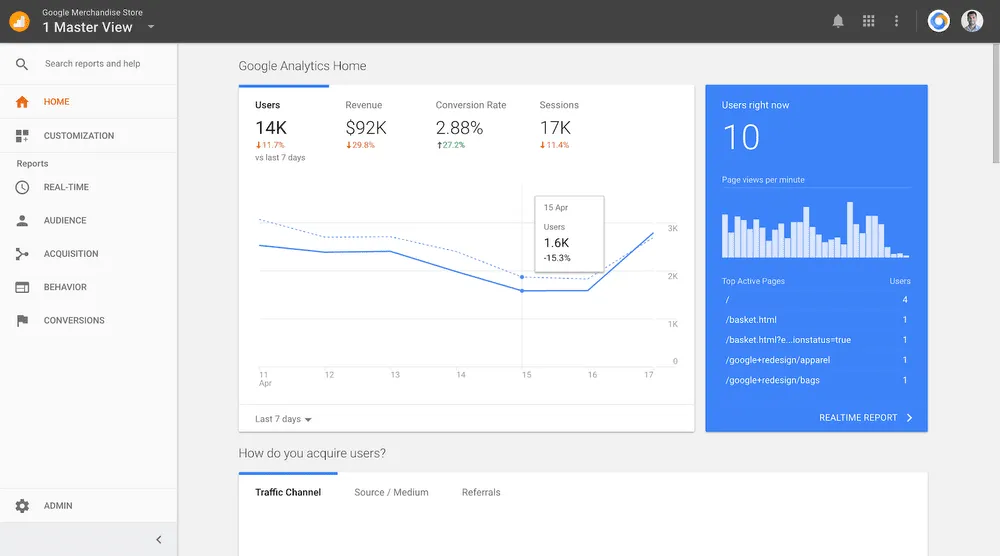
Image Source: Google
One valuable insight is referral reports, which you can access by going to Acquisition > Overview > All Traffic > Referrals.
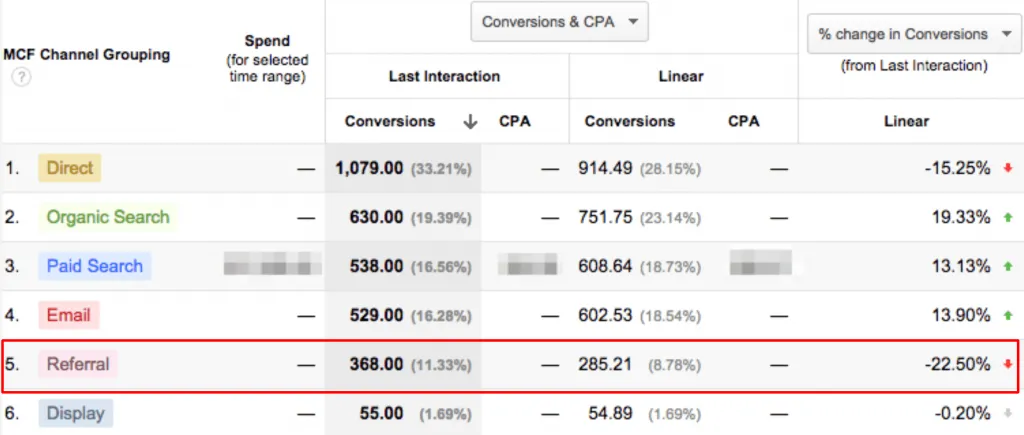
Once there, you’ll see the conversions of your referrals and can even go a step further and see the traffic and assisted conversions of every referral source.
This gives you a good overview of how efficient each of your referrers is, based on the number of new customers they brought to you.
Google Analytics is a great tool once you get to know how it works and you can even enable notifications so you get notified every time a new person is referred.
Pros: A powerful tool that saves you time
Cons: Can be complicated for beginners
Let’s continue.
Have you ever visited a form on a website and came across the question: “Where did you hear about us?”
Chances are, you have and that’s because referral forms are a great way to track where your customers are coming from.
For instance, potential replies to the above question could be:
Users can even tell you exactly who that person was if they choose the third option.
That way, after you’ve collected the data, you’ll know who your referrers are and how many people they’ve referred to your brand.
Author’s Tip: You can combine the referral forms with a spreadsheet where you organize all the data gathered from them.
Pros: An easy and cost-effective solution
Cons: Doesn’t collect much in-depth information
Moving on to the last tactic we’ve got for you.
Don’t let the title of this tactic scare you – it’s quite a simple one.
UTM parameters are short text codes that you add to a URL to make it unique so you can track its performance.
Look at the following link from Thinkific, for example:
https://www.thinkific.com/affiliates/?gspk=cGFydG5lcnRsbXNp&gsxid=IIXf7YDTd8Ml
The UTM parameters are basically everything that comes after the question mark and is unique for each referrer, making it relatively easy to track where your new customers are coming from, based on which link they clicked on.
Makes sense, right?
To use this method, you need two things:
The second one will help you generate a unique URL based on your own parameters and Google Analytics will help you monitor its performance if you’re not using a referral tracking software.
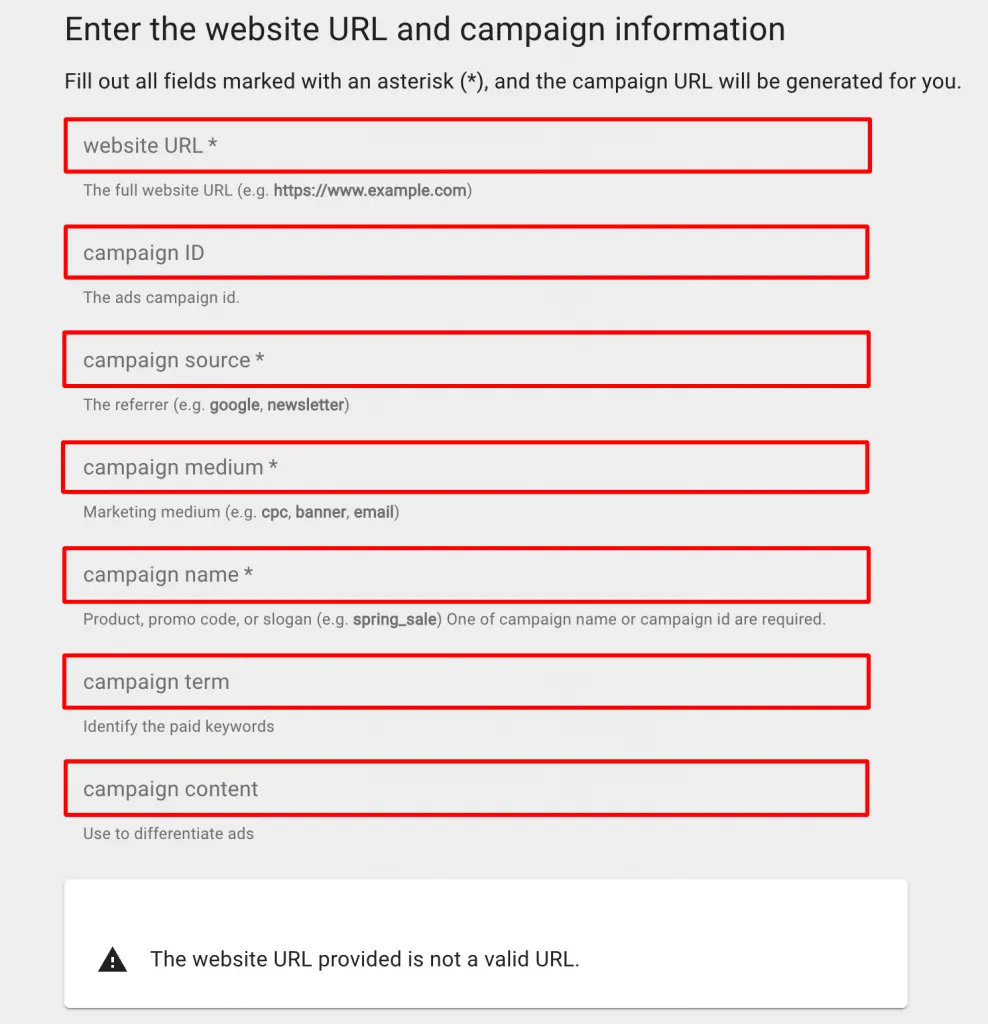
Image Source: Google Analytics
Pros: It’s free of charge
Cons: Needs a good understanding of Google Analytics
Those were the most prominent tactics that’ll help you track your referrals.
It’s not the most simple business process, but it can be much easier with the help of the right tools.
Now we’re going to look at a template we created for you that you can use to monitor your referrals step-by-step.
In this last section of our guide, we’ll be sharing our free referral tracking template with you.
We’ll go through each step to make sure that everything is clear and that you’ll be set to use it by the end.
Before we see how it works, in the Start Here sheet you can have a look at the basic guidelines for how to use the template.
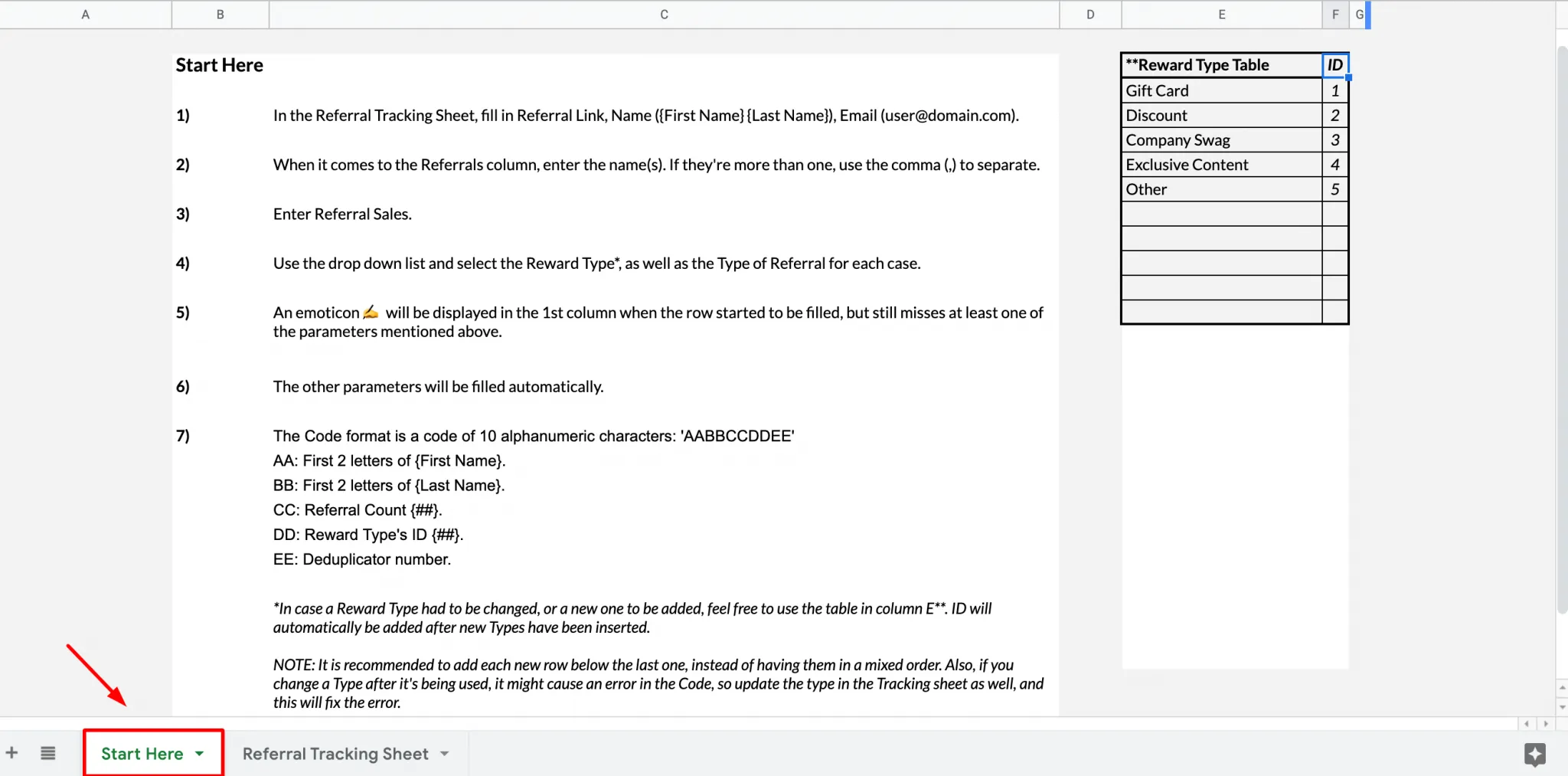
However, the Referral Tracking Sheet is where our template is.
Let’s see how it works step-by-step.
The first step is to add the referral link that each of your referrers has so you can track it.
After you enter it in column C, you’ll notice that an emoji appears in column A; this will happen when at least one column is filled, but not all have been completed.

Author’s Note: In order for the referral code to be automatically generated, all required columns must be filled.
It’s as simple as that.
Let’s continue.
In order to know exactly who each of your referrers are, it’s important to add their name – first name and last name when you have it – and email address.

This will help you keep track of your advocates and their performance, which you’ll see in the next columns.
Be sure to add the pieces of information every time a new referrer signs up for your program.
Author’s Note: All data in our template is for example purposes only.
Let’s continue to the next step.
It’s now time to add all the right data regarding the referrals each advocate makes.
This involves:
This gives you a great overview of the performance of each referrer so you can know whether they’re super promoters or need more buying motivation; we elaborated on this in the sixth reason further up.
What’s worth noting is that if you begin inserting names under the Referrals column – searating each with a comma – the referral count will generate automatically.
For instance, if we add two names of referred people, the number 2 will appear in column F.

You can then enter the total referral sales driven from your referrer.
All in all, keeping track of the progress each person in your referral program makes is an integral part of a tracking template.
The only downside to this is that you’ll have to enter some data manually, while referral software will present everything automatically.
Moving on.
This last part of our template will help you monitor the rewards you need to give out, both the amount as well as their type.
This includes three columns:
If you’ve set a range of rewards, you can keep track of them by selecting each type in the Reward Type column.
For example, some of the available rewards on our list include gift cards, discounts, company swag, exclusive content, and other.

When you’re done with this column, you can enter the type of referral in column J.
This can either be one-sided or double-sided.

When those columns have been filled, the Rewards Owed one will automatically generate the amount of rewards you owe to your referrer, based on the referral count and the type of referral.
For instance, in our case the referral count is 2 and the referral type is one-sided, meaning there are two rewards owed.
If the referral was double-sided, there would be four rewards owed.

This is a great way to monitor what and how many rewards you send out to stay on track and ensure that your sales are worth more than what you spend on rewards.
Now that all columns have been completed, you’ll notice that a referral code has automatically been generated.

Pretty cool, right?
Overall, such a template can really help you keep your data organized and make your referral programs as effective as possible.
Grab our referral tracking template for free:
Let’s wrap things up with some final words.
There you have it.
That was our full guide on how to track your referrals step-by-step.
We covered the definition of referral tracking, why it’s important, as well as how to track your referrals through seven simple tactics.
What’s more, we shared our template that you can use to monitor all the referral data you collect – don’t forget to download it!
We hope that you found everything useful and your next referral campaign will be easier and more efficient.
The best way to track referrals varies based on your business needs, but common tactics include:
The most common ways of referring someone to a product or service are by sharing a referral code or a referral link you might have with them, as well as asking them to quote your name if they fill out a referral form.
Referral tracking is the process of monitoring and collecting data about all actions taken within a referral program.
This data can include the names of the referrers and the referred people, the referral results, conversion rates, and more.
You can track referrals on a website through a referral marketing tool or Google Analytics; both can help you monitor every piece of information around your referral program.
The use of cookies, UTM parameters, and referral codes are also great ways of tracking referrals.